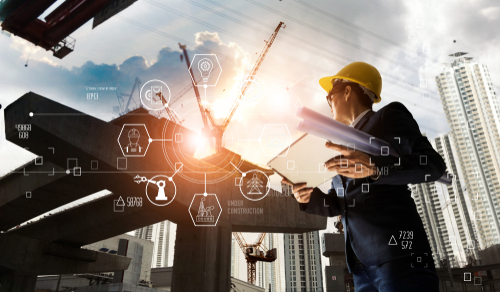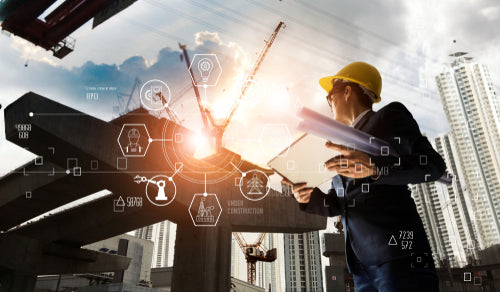A powerful mechanical, electrical, and plumbing (MEP) design is one of a building's most important systems, as it helps save long-term costs and meet government greenhouse gas production limits. A strong MEP design ensures that there is no conflict between these three, individually or together.
The fusion of AI with MEP is a step forward in conceptualizing advanced computational design tools that help meet the carbon emission, sustainability and longevity goals of MEP design. The construction sector alone contributes to 39% of total carbon emissions, in which MEP plays an important role
AI in MEP design ensures that millions and billions of potential MEP designs are generated in order to identify the best design among them that meets the needs of the project and also takes into consideration cost-effectiveness, protection environmental and strategic implementation.
Artificial Intelligence (AI) not only facilitates the planning of a facility by employing advanced tools, but also helps reduce the overall carbon footprint of the project through advanced AI technicality that coordinates and optimizes operational carbon. The average carbon footprint of a typical construction project ranges between 30 and 80 years, which AI aims to reduce by at least 5% to 10% in the coming years.
How can AI help make MEP projects green?
An efficient building system is one that has an effective MEP design, is affordable and aims to reduce overall operational carbon. Achieving significant operational carbon levels also means a reduction in the amount of piping, wiring, controllers, generators, emitters and various ducts used in MEP layouts. The more complicated the MEP layout, the more energy will be generated, the higher the operational carbon and vice versa. Energy efficiency is a constructive solution to reduce at least half of greenhouse gas emissions. When AI optimizes energy efficiency and MEP layouts, it results in a 10-30% reduction in conventional energy use.
 AI can successfully monitor, collect, control, evaluate and manage energy consumption in relation to mechanical, electrical and plumbing installations in all areas of construction. Power is reduced during peak operating hours, problems are identified and equipment failures are detected well ahead of time using advanced AI tools, such as AI-driven energy management systems, to ensure no loss occurs excessive energy.
AI can successfully monitor, collect, control, evaluate and manage energy consumption in relation to mechanical, electrical and plumbing installations in all areas of construction. Power is reduced during peak operating hours, problems are identified and equipment failures are detected well ahead of time using advanced AI tools, such as AI-driven energy management systems, to ensure no loss occurs excessive energy.
AI tools and applications can also be implemented in various energy efficiency strategies for industrial, residential, factory and commercial building units. This helps energy producers forecast energy, store renewable energy, manage energy and employ sustainable development techniques into their existing strategy. It also uses big data to analyze processes that guide decision-making around changes that need to be made to the MEP design and predict problems only to provide customized solutions for them.
AI-based MEP design tools result in less embodied carbon, along with advanced design strategies that ensure MEP designers working with AI do not contribute to the long-term quality and operating costs of MEP systems. One such useful software is Building Information Modeling, which integrates all project-related details with project participants to plan, design and construct building structures that adhere to standardized MEP designs. This software not only manages data, but also predicts costs and helps builders stay under budget, design 3D MEP models, analyze MEP service, eliminate on-site hazards associated with these services, and provide a better overall job site experience in regarding MEP system implementation and maintenance.
Do we really need AI in construction?
The short answer to that is yes. The construction industry is one of the most dangerous areas to work in, especially with the complex MEP systems it installs in buildings. The high probabilities of on-site injuries, an average of at least 60,000 deaths every year on construction sites, and the complexities of MEP design mean that AI is not a requirement, but a necessity in construction.
AI helps build safe, efficient, and monitored MEP systems with the least chance of failure. It also helps coordinate the entire MEP workforce to complete projects on time. Furthermore, AI results in greater productivity not only of MEP systems, but also of the workers working in those systems. Including AI in MEP projects maximizes system efficiency and minimizes costs related to system inefficiencies.
In construction, computer-aided design, 3D printing, and virtual reality are the most common ways to use AI that are beneficial in standardizing MEP designs with the best possible quality.
Local law regarding MEP
Local law announced by the US judiciary has imposed strict limits when it comes to issuing regulations that help reduce carbon emissions from the construction industry. Current law provides that the Environmental Protection Agency's authority to regulate greenhouse gas emissions is restricted by the Clean Air Act's anti-pollution law. New regulations are being formulated for the same under the Biden administration.
A new target was set to reduce greenhouse gas pollution by at least 50% to 52% by 2030. President Biden also rejoined the Paris Agreement to address the US climate crisis and claimed to achieve net-zero emissions zero by 2050. A Nationally Determined Contribution has been launched that outlines the defined processes organized by the National Climate Working Group to achieve the new targets by 2030.
US Local Law 97 on sustainable buildings states that the city where construction is being carried out must conduct an in-depth study on the feasibility of carbon trading between different buildings in the state to realize the compliance mechanism. This specific law is one of the most robust laws in existence when it comes to building emissions legislation and focuses on green energy purchasing, carbon trading, achievable deadlines, and advisory refinements.
Final Words
AI in MEP is a prerequisite in today's construction industry as it helps predict building-specific MEP requirements and also reduce greenhouse gas emissions. It also reduces hours spent on site by employees as the majority of work is converted to an automated system with lower costs and greater efficiency. By using AI in MEP projects, building and worker productivity can be increased by about 50%, and the 10 billion dollars spent every year on construction activities can be significantly reduced.

